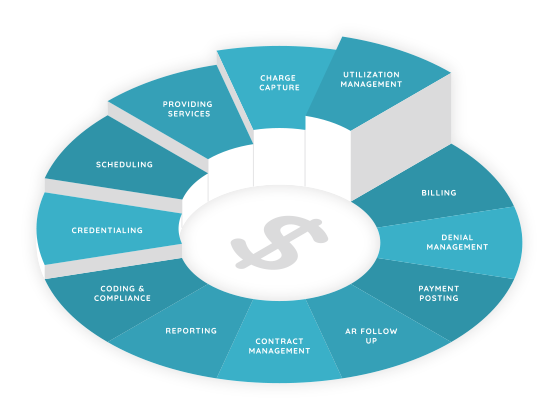Days in accounts receivable. Everyones Goal in Revenue Cycle is to COLLECT 100 of the money owed At the LOWEST COST The FIRST TIME As FAST as possible Standard Performance Metrics Analytics The top metrics and analytics used by providers revolve around AR Days Denials Underpayment rate and.
 5 Key Metrics For Revenue Cycle Management Brightree
5 Key Metrics For Revenue Cycle Management Brightree
29 revenue cycle metrics to track long term Kelly Gooch - Monday August 19th 2019 Print Email Monitoring revenue cycle performance is increasingly important for hospitals and health systems.

Revenue cycle metrics. Define Clear Lines of Accountability. It tells a practice the number of days money owed remains unpaid. But are three measurements really enough to tell the comprehensive story of your revenue cycle performance.
The first metric is Days in Accounts Receivable AR. In key order-to-cash revenue cycle metrics. The first step to revenue cycle optimization is understanding what to.
Five Healthcare Revenue Cycle Best Practices Yield Higher Revenue 1. Calculating days in accounts receivable AR is one of the most difficult revenue cycle metrics to understand and to utilize in analysis. This is an average of how long it takes to collect.
Metrics can help you determine whether your revenue management cycle processes are efficient and effective. Although vital to any practices finances this statistic is not. Defining the right revenue cycle metrics for any organization begins with a deep assessment of the real situation first asking Is this measure important to us.
For example an organizations denials percentage ties to its cash percentage which. Formulate Number of Days in AR. Here are some of the key performance indicators of successful revenue cycle management along with best practice tips for facilities.
A lot of organizations make that Sikina said but its a tough goal. This metric will show the impact on cash flow because of claims inputting and includes issues related to delayed claims. This revenue cycle performance metric can be found using information from your POS system and your accounts receivable records.
Tracking this and related revenue cycle metrics can identify problems in POS operations that are impacting RCM. KEY METRICS TO MASTER. In many cases filing dates are delayed due to coding.
Focusing on the claims-generation process is how the DNFB KPI determines revenue cycle performance. Identify and Measure the Right Metrics. Revenue Cycle Performance Indicators.
Why would we want to measure it Most measures tie to another. Measuring the right revenue cycle metrics for you. Sikina has four best practice revenue cycle metrics.
Gross receivables accounts receivable days and cash collections. Watch this video to. It should be no more than 35 days of average daily charges in the accounts receivable balance.
Analyzes performance on most important measures of revenue cycle performance from point- of-service collections through final appeals for denials and sources of cost and performance. Gaps Between Actual Service Dates and the Dates Claims Were Filed When evaluating revenue cycle management its crucial to consider the gap between date of service and the date billed. Even under 40 days is within the.
Precise measurement allows clear lines of accountability. Benchmarking data shows that organizations that excel in revenue cycle efficiency and quality are more likely to have adopted leading practices which influence different parts of the cycle. Preparing the Healthcare Revenue Cycle for Value-Based Care Metrics are more month to month to month and key performance indicators or MAP keys are strategic and allow me that ability to compare and find out for example that the high-performing organizations in todays world have net days in AR between about 28 and 36 whereas net.
Looking at revenue cycle key performance indicators is a great way to understand overall RCM performance and identify strengths and weaknesses. Boiled down to only three revenue cycle measure-ments. Each of these metrics can easily be calculated and analyzed to help improve your revenue cycle.
Find the metric by dividing the total dollars in DNFB by the average daily gross patient service revenue. Revenue Cycle Performance Metrics. How many days a claim sits in AR is perhaps the single most important revenue cycle metric.
Claim Integrity Task Force. IBM Institute for Business Value. Healthcare is rapidly changing and healthcare organizations are under constant pressure to operate at maximum efficiency while maintaining revenue cycle integrity.
Powerful Benchmarking Tools One of the most effective ways to improve performance. It can be calculated by taking the POS payments and dividing it by the total self-pay cash collected. Standardizing denial metrics for revenue cycle benchmarking and process improvement Healthcare providers including hospitals health systems and physician practices rely on an effective and efficient revenue cycle to ensure that they receive the full payment due to their organizations from health plans and other third-party payers.

